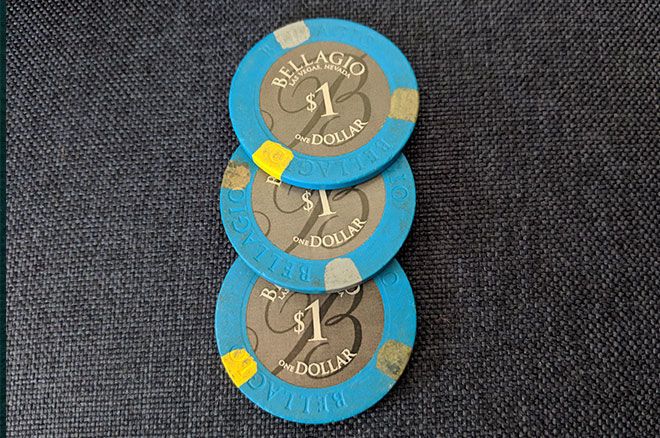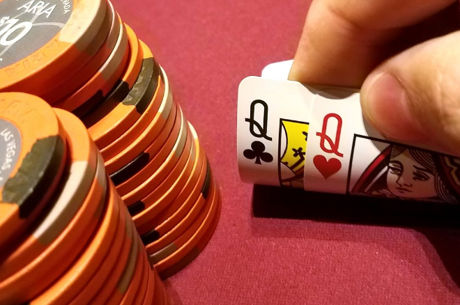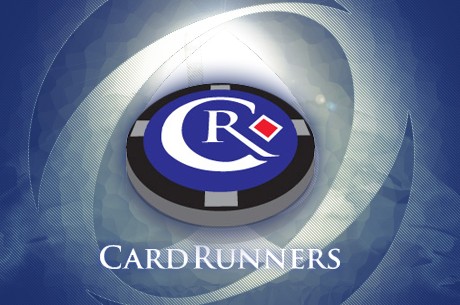10 Tips That Will Help You Destroy Limpers

If you play live poker or low stakes online, this article is for you.
You're about to learn how to absolutely destroy open-limpers — players who limp when everyone before them has folded (not to be confused with over-limping, which can be fine).
You're about to learn how to absolutely destroy open-limpers
Let's dive in!
How to Play Against Limpers
There are two contradictory approaches to facing open-limps. Which approach you should use in a given situation depends on a number of variables.
1. The Theoretical Approach: Play Tighter
When a player open-limps, they are saying, "I have a hand that is good enough to play from this position."
So, not only do you have a third player to worry about (in addition to the small and big blind), but that player is supposed to have a solid hand.
You should use this tighter approach when:
- The players behind 3-bet a lot.
- You are playing with short stacks, which limits your skill and positional edge.
- The limper is a strong player who likely has a well thought out and balanced limp range (such players are rare).
But this theoretical approach will usually not be your most profitable option. Instead, you should take the practical approach.
2. The Practical Approach: Loosen Up
When a player open-limps preflop, you can pretty safely assume they are weak, passive, and worth targeting with aggression.
The mistakes these weak players make post-flop will allow you to over-realize your equity when you isolate them. In other words, limpers will rarely put you in difficult spots post-flop, allowing you to easily win pots you aren't supposed to win, so to speak.
You want to look for opportunities to play pots against these passive players.
Forcing a limper to call your raise preflop, out of position, and with their weak range, is one of the most profitable situations in poker.
Example Versus Limp Range
In case you're wondering exactly how tight/loose you should isolate versus limpers, let's take a look at the recommended Button vs Limp range from the Upswing Lab (note that this assumes exactly one limper):
The looser and weaker the limper is, the more light blue hands you can profitably raise with.
Get "Vs Limp" charts for all 8 positions when you join the Upswing Lab.
10 Tips for Crushing Limpers
1. Raise to 3bb+1bb per limper when playing online, and 4bb+1bb per limper when playing live.
These sizings are big enough to discourage the players behind from calling, but small enough for the limper to call happily.
You should be prepared to make adjustments that will maximize value against the weaker players.
You should, however, be prepared to make adjustments that will maximize value against the weaker players.
For example, if you are playing a live game and the limpers seem to snap-call your 5bb raise, you should try 6bb, then 7bb, etc., until those players start folding. At that point, you should revert to the previous size.
This adjustment allows you to see the flop with the stronger range in the biggest pot possible.
2. If your opponent limps with a strong range, tighten your iso-raising range.
Not all limpers are alike. Some players limp with 40%+ of the possible starting hands, and others like to limp with 20% of hands.
It makes sense, then, to adjust depending on the individual player –– you can profitably raise with a much wider range against the looser limper than the tighter one.
3. When the effective stack is 40 big blinds or less, don't iso-raise with small pairs.
Iso-raising with small pocket pairs is usually the right play, given the small investment and big potential when you flop a set. But things change when stacks are short.
consider folding small pairs when there are many aggressive players behind you.
Instead of playing a pot with a stack-to-pot ratio (SPR) of around 8–12, where you can win your preflop investment 15–30 times over, you will be involved in a pot with an SPR of 5 or less. This type of investment is very good if you hold hands that can easily make strong top pairs, but it's an unlucrative spot with more speculative hands (like small pairs).
You can usually just limp behind with these small pocket pairs, but consider folding when there are many aggressive players behind you.
4. If a player behind you is 3-bet-happy, iso-raise tighter.
Sometimes you will be at a table where the regulars think (correctly or not) that you are isolating the limper with a very wide range. If you are in fact raising wide, and they adjust correctly by 3-betting you frequently, then you have two solid strategic options:
Although the first adjustment is correct, it's tough to implement effectively because it's difficult to gauge exactly how wide your opponent is 3-betting. Consequently, by 4-betting lighter you risk landing yourself in very difficult and often very -EV situations.
For this reason alone I prefer the second option: tighten the iso-raising range. Not only will this allow for lower variance, but it might be more +EV than the first option, depending on your opponent's ability to re-adjust quickly.
Also, you will not have to make tough decisions nearly as often, and your 3-betting opponent is likely to level himself into making very -EV plays.
5. Iso-raise with a tighter range from the blinds.
Playing out of position (OOP) is never easy. Even the GTO preflop solutions are made up of very mixed frequencies, which are unattainable for mere humans. For this reason it is best to keep your range tighter when playing from OOP.
Remember: When OOP, tight is right.
6. When your opponent limp-3-bets, assume they have a strong range.
When players limp, it's usually because they think their hand is not strong enough to raise, but occasionally they are trying to trap with a premium hand such as AQ+, JJ+.
When they limp-3-bet, you will occasionally see a random bluff, but the vast majority of the time they will have a very strong hand, and you should tighten your play accordingly.
7. Bet smaller with your bluffs and bigger with your value bets on the flop.
You do not need to balance your bet sizing on the flop against recreational players.
You do not need to balance your bet sizing on the flop against recreational players.
These players usually have inelastic calling ranges. This means that, for example, a 66% pot c-bet will make them fold just as much as a 50% pot c-bet. For this reason, you should use a smaller sizing with your bluffs.
You can take the opposite approach–betting large–with strong hands. Since their range is often inelastic, you want to extract as much money with your strong hands as possible.
8. Value bet thinner, especially on the flop and turn.
Weak recreational players usually disregard pot odds and overvalue their implied odds. This makes them likely to call big bets with very weak hands hoping to catch a straight, a flush, a set, or some random two-pair.
Going for much thinner value than you normally would is thus a very profitable adjustment to make on the flop and turn.
9. Play a one-and-done strategy with your bluffs on the flop.
Weak recreational players get to the flop with a wide and weak range, which misses much of the time; while the range they will go to the turn with is a much more pair- or draw-based.
For this reason you should usually be wary of bluffing on the turn, and instead try a ‘one-and-done' strategy on the flop. You should, however, make sure you capitalize on the fact that recreational players fold more than they should on scare cards.

10. Fold more against raises after you c-bet.
Players who limp preflop will tend to play passively in general. They love calling and rarely raise with their draws.
Also, because these players play a lot more hands than you would––even random offsuit ones--they can have more random two pairs or trips than you might expect.
For these reasons, you should play tighter than normal when they raise your c-bet.
Conclusion
Knowing how to play against limpers, which are usually weak recreational players, is one of the most important skills to develop. Many professionals have amassed fortunes by focusing on just this aspect of their game.
Take these tips to heart and I'm sure you'll crush the weak recreational players.
Good luck, grinders!
Sponsor generated content by Upswing Poker








